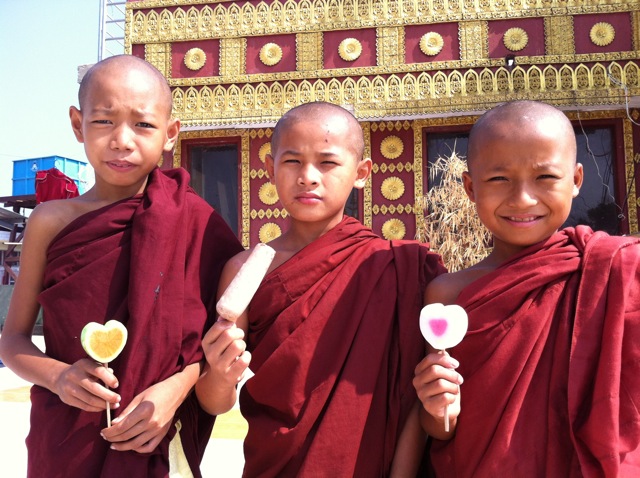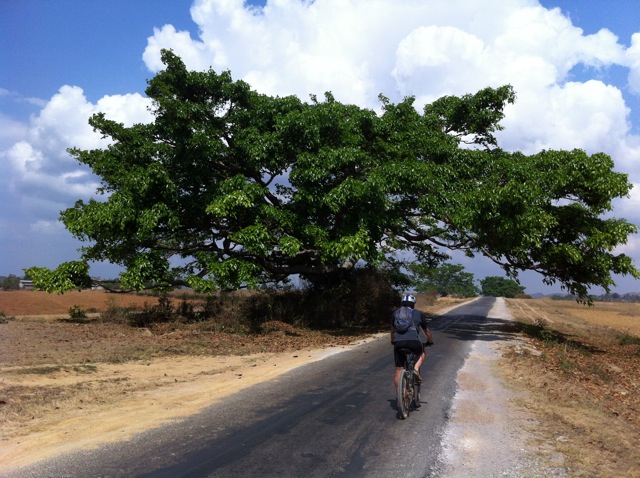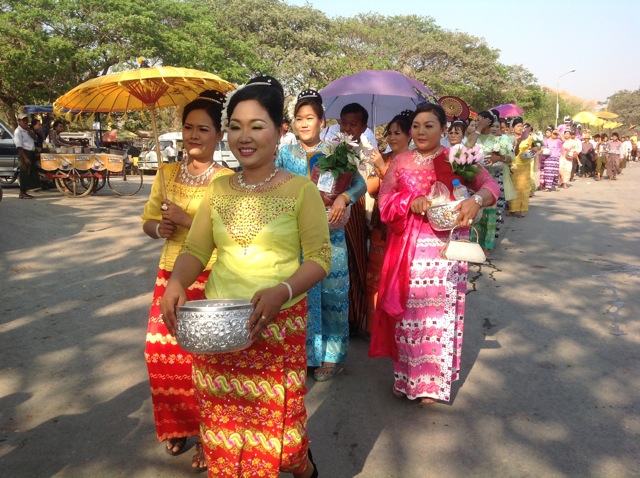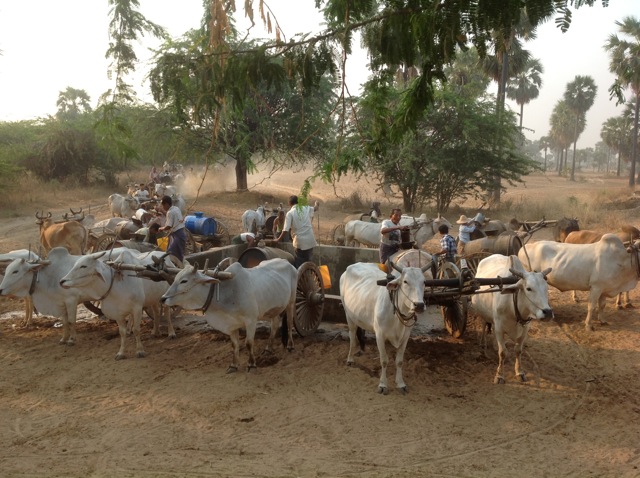
photos by Smathpix
Richard Lutz continues his trip through Burma and recounts slogging out the miles on his bike and what he saw around him
Burma dogs are what you have to watch.
Not that the mutts are dangerous. But they do lurk, lie corpse-like in the sun’s heat or, more suspiciously, carry unknown unseen bugs I don’t want to know about.
They belong to no one.
They lounge in farm compounds, patrol tea shops, wander on the paths and long straight roads. They all seem to be light brown, quiet, apologetic about their dusty existence.

They have no identification, no tags. They are definitely not called Fluffy, King or Tyson. They’re Burmese mongrels. They’re nameless.
‘They’re just here. They are nobody’s.’ I am told.
In the weeks I spent on a bike, through tiny farm hamlets, isolated compounds, strips of roadside homes, on sandy paths and dirt roads, on big roaring highways between Rangoon and Mandalay, I never saw anyone pay any attention, give any care, to these dogs . They sort of…exist…like a bush or an empty bottle.
Ignoring the big picture of this changing nation, now caught by another round of bloody riots, my daily routine is small beer. It is a world of salves, pads, gels, dust, fingerprints ingrained on handlebars, the wrong jerseys, the right lycra, the helmet that chafes, the sunglasses that slip down a sweaty face, the long miles, the sunburn on a balding head (mine), the heat, the water in a hot bottle…the bits you need that you left at the last rest stop.

Giant trees, small roads
It is a day filled with giant trees lining little roads, silent temples standing in fields , giant golden pagodas crowning hillsides, little teashops dotted everywhere.
And there’s one other thing: a febrile need for a map.
Half the time I have no idea where I am except in a saddle. I can’t get ahold of a good map. We are biking with a Burmese cyclist who knows every offroad track in this country. He suddenly throws a left between two banyan trees, throws another right just after a tamarind sapling, another turn in the curve back of a peanut field, another left next to an oxcart.
He bikes in a sunburn-orange jersey emblazoned with the logo Mekong Bike Challenge. I don’t even want to imagine what that marathon must be. But the lettering lets you know it was 1500 miles long.
This jersey, disappearing over a hill, slipping beyond an horizon, down a lane to a waiting teashop, is my map.
But exact locations aside, it is one big show. On the big tarmac roads, lorries roar past as do crammed buses. Kids, really little boys and girls, continually jump onto the roadside to wave. Drivers hit the horn behind you , not with menace but with a stark warning.
A forgotten temple offers up 800 year old murals; a river village is home to ferries that rip up the Irrawaddy waters with their long prop shafts; early morning brings out a line of young monks and nuns with their alm bowls; a road is crammed with a ceremonial parade.

Then comes a blessed flat stretch. A canal edges alongside, trees line the road. Little kids dive into the canal, women bathe, clothed, without regard to the passing strange strangers .
In one hamlet, we are stopped at a communal home lived in by an extended family. Some of the women, amid the peanut, chili, potato, tomato and garlic fields, are grinding tamarind, slapping them into flat fritters and giving them a quick fry up. That and Chinese tea, always on everyone’s table, is our lunch. We are told not to offer money. It is their pleasure to be our hosts. A gift offends.
This seems to be the case in this Buddhist country. We are stopped later by a woman and her kids on a road that circles a huge tea plantation. It’s in high hills- big hills akin to the Lake District. She offers a bag of small oranges, delicious little things. Once again, the word was not to offer anything It was her way of saying hello.
As for the kids, like kids anywhere, they seemed to be linked into some unaccountable grapevine. Theywait for us and line a road when we pass. Little kids with even littler ones holding their hands shout Good-bye or Mingla vah (hello) and wave. Then they scamper back to the shade.
Offroad, we hardly met anyone and didn’t stop unless invited into a home. Sometimes there was no choice. At a wellhead, in a swirl of dust, oxcarts from dozens of villages gathered to collect clean water.

You don’t go around a line of oxcarts. You wait. We straddled the bikes and wafched.
The carts pulled huge tanks that were manually filled. The watermen grunted at their teams and, like any lorry driver, deftly backed them up right to the lip of the well. Then the drivers got out and bucket by bucket poured clean water into the big drums strapped to the top.
Finished and full, one by one, with creaking wooden wheels, they drove off, as slow as time itself, back to the villages.
Later, the carts returned for more water, another round of slow creaking wheels. We heard them before we saw them. We heard the quiet unending creaking of the wooden wheels. An old sound.


nice piece…
Well Done Richard, that’s just what it’s like. Where did you get those wonderful photographs from? And the dust…the damn dust.
Lovely descriptions – can imagine it easily.
Years ago, actually the last century and then some, when he was known as Dicky, Richard was apt to ride a bike (mine specifically) to the corner candy store (this before he discovered Cadburys), and in a rush of sugar – walk home leaving the bike for the local hoodlums to dismember and sell the parts to other local bi-pedalling hoodlums (known in the local vernacular as simple hoods.) So it is good to see that he made it between Rangoon and Mandalay without losing his wheels… But i would have eagerly giver him my current wheels if needed to have this adventure!
Nice pictures
keep ’em coming
Your post has compelled me to get back on the bike.